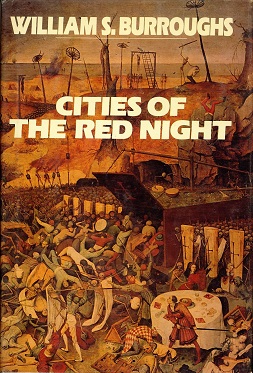
Cities of the Red Night
Cities of the Red Night is a 1981 novel by American author William S. Burroughs. His first full-length novel since The Wild Boys (1971), it is part of his final trilogy of novels, known as The Red Night Trilogy, followed by The Place of Dead Roads (1983) and The Western Lands (1987). The plot involves a group of radical pirates who seek the freedom to live under the articles set out by Captain James Misson. In near present day, a parallel story follows a detective searching for a lost boy, abducted for use in a sexual ritual. The cities of the title mimic and parody real places, and Burroughs makes references to the United States, Mexico, and Morocco.
Author
Plot[edit]
The plot follows a nonlinear course through time and space. It imagines an alternate history in which Captain James Misson's Libertatia lives on. His way of life is based on The Articles, a general freedom to live as one chooses, without prejudice. The novel is narrated from two different standpoints; one set in the 18th century which follows a group of pirate boys led by Noah Blake, who land in Panama to liberate it. The other is set in the late 20th century, and follows a detective tracing the disappearance of an adolescent boy.
Reception[edit]
Burroughs's biographer Ted Morgan writes that one of the book's themes is "the cities themselves, imaginary cities located in the Gobi Desert 100,000 years ago, the names of which were magic words that Brion Gysin had once taught him, saying, 'If you want to get to the bottom of something, you should repeat those words before going to sleep.' Their ultimate source is the Ghāyat al-Ḥakīm, better known in the west as the Picatrix, specifically the Invocation of the Perfect Nature within that text.[3] The city of Waghdas is in the grip of a cholera epidemic, which turns out to be a virus that is sexual in origin". Morgan notes that while this disease is similar to AIDS, the novel was written when AIDS was unheard of. Morgan concludes that Cities of the Red Night is, "certainly the most compelling and inventive of Burroughs' books since Naked Lunch."[4]